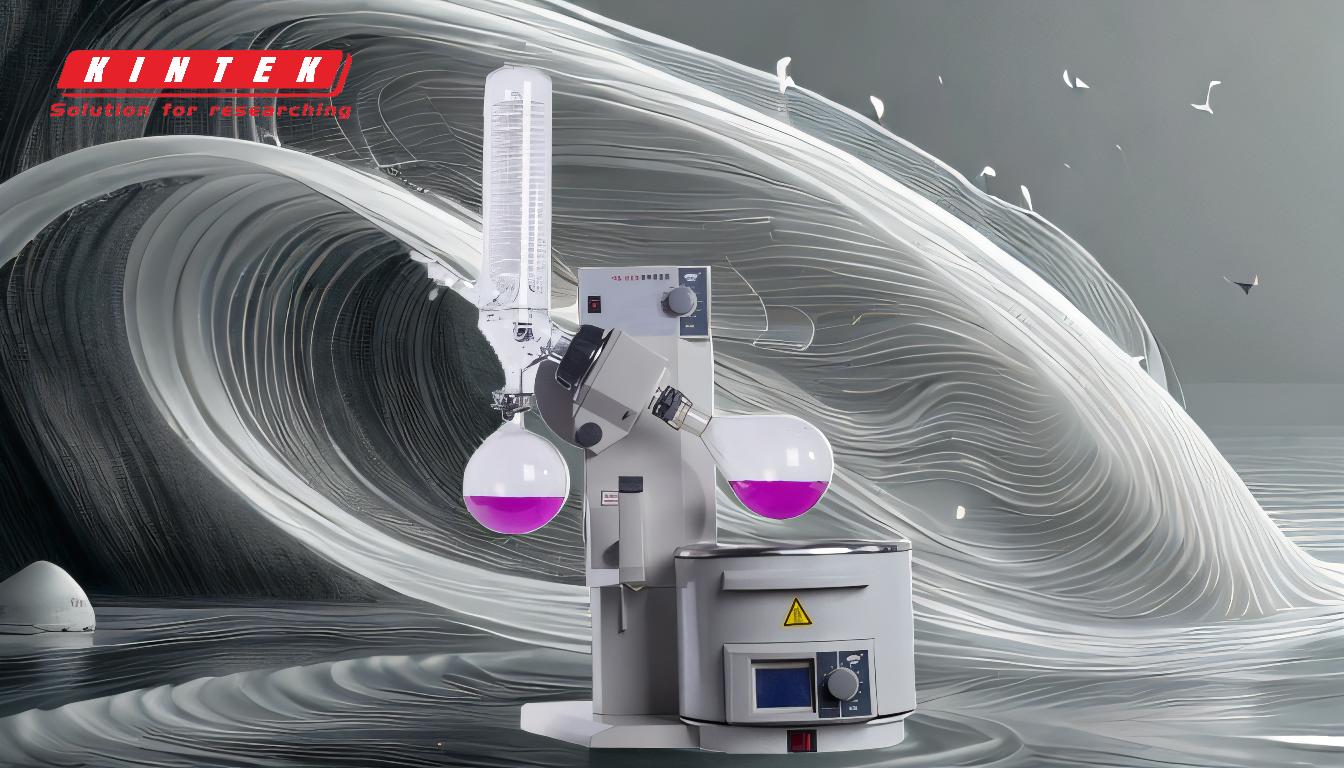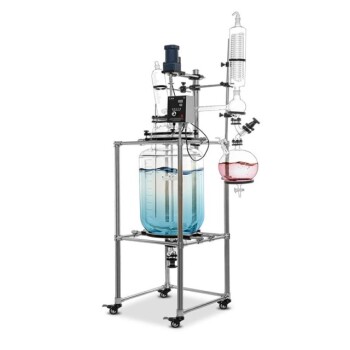The rotation speed of a rotary evaporator is a critical parameter that influences the efficiency and effectiveness of the evaporation process. Typically, the rotation speed ranges from 0 to 220 rpm, with higher speeds (250–280 rpm) recommended for maximum turbulence in benchtop-scale systems. The speed is controlled via a monitor, ensuring efficient evaporation and high contact torque. For consistent results, it is also important to consider other parameters such as heating bath temperature, chiller settings, and vacuum levels, which can be optimized based on the solvent and sample being processed.
Key Points Explained:

-
Typical Rotation Speed Range:
- The rotation speed of a rotary evaporator typically ranges from 0 to 220 rpm. This range is controlled using a monitor, ensuring efficient evaporation and providing high contact torque.
- At lower speeds, the process is slower but reduces the risk of bumping, which is particularly important for temperature-sensitive samples.
-
Higher Speeds for Maximum Turbulence:
- For benchtop-scale rotary evaporators, a rotation speed of 250–280 rpm is recommended to achieve maximum turbulence. This higher speed enhances the mixing and evaporation efficiency, making it suitable for applications where rapid evaporation is required.
-
Moderation in Rotation Speed:
- It is generally advisable to operate the rotary evaporator at a moderate speed, preferably around one-third of the maximum allowable value. This ensures proper operation and minimizes the risk of mechanical stress or sample degradation.
-
Integration with Other Parameters:
- The rotation speed should be considered in conjunction with other parameters such as:
- Heating Bath Temperature: Typically set between 25°C to 50°C, with lower temperatures reducing the risk of thermal decomposition.
- Chiller Settings: Recommended to be set at 10°C for consistent results.
- Vacuum Levels: Can be automatically set using a solvent library feature, which allows for the selection of appropriate settings based on the solvent (e.g., ethanol or water).
- The rotation speed should be considered in conjunction with other parameters such as:
-
Practical Considerations:
- For common lab solvents, a low-vacuum pump (or a sink aspirator) is often sufficient. The combination of moderate rotation speed, controlled heating, and appropriate vacuum levels ensures a smooth and efficient evaporation process.
- Lowering the water bath temperature to 30-40°C and maintaining the ethanol vapor temperature at 15-20°C can further prevent thermal decomposition and improve the quality of the final product.
By carefully adjusting the rotation speed and other parameters, users can optimize the performance of their rotary evaporator, ensuring efficient and consistent results across a variety of applications.
Summary Table:
| Parameter | Recommended Setting |
|---|---|
| Rotation Speed | 0–220 rpm (standard), 250–280 rpm (turbulence) |
| Heating Bath Temperature | 25°C to 50°C |
| Chiller Settings | 10°C |
| Vacuum Levels | Adjust based on solvent (e.g., ethanol/water) |
| Practical Tips | Use low-vacuum pump, maintain 30–40°C bath temperature |
Need help optimizing your rotary evaporator settings? Contact our experts today for personalized advice!










